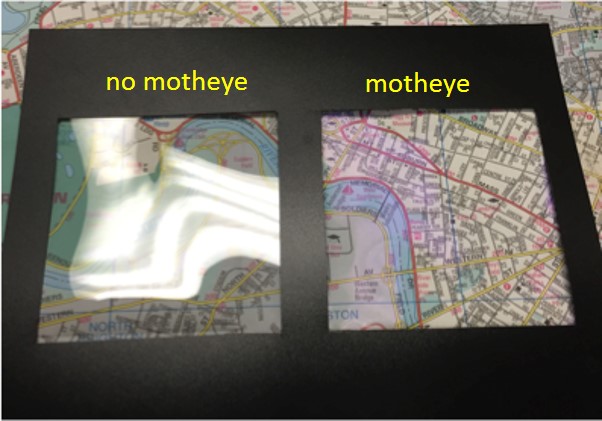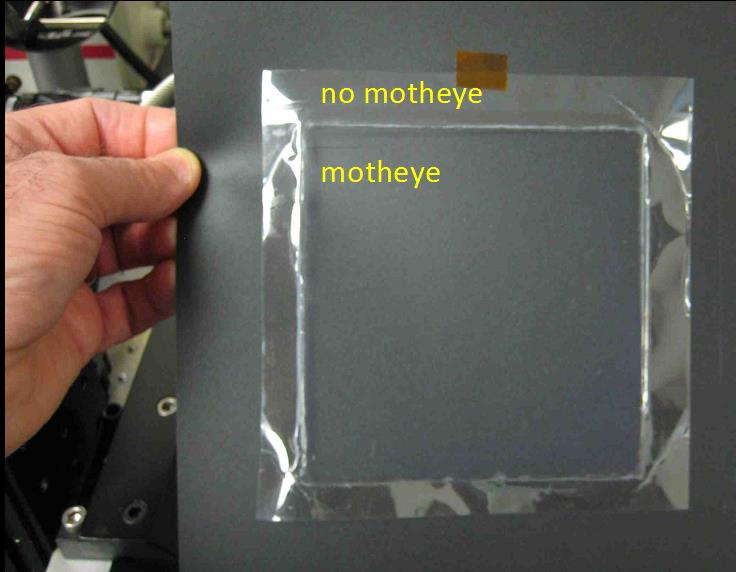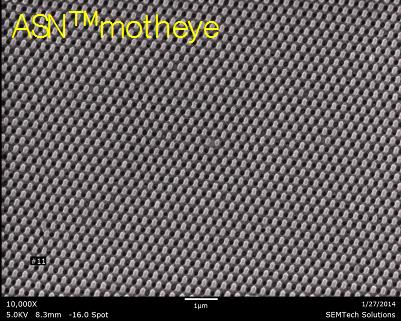Biomimetic structures mimic the structures found in living organisms, such as those of butterfly wings, bird feathers, fish skin, and insect eyes. In the case of the moth’s eye, a periodic array of tiny, closely packed, lens-like structures provides very effective anti-reflective properties to avoid detection and protect against predators.
Using our nanopatterning processes, these same properties can be imparted to various surfaces to reduce reflection and glare for many types of substrates—rigid, flexible, flat, curved or lens-shaped.
Unlike conventional multi-layer anti-reflection coatings, our process forms an invisible nanoscale texture on the substrate. This type of nanostructure retains its anti-reflective properties over a wider range of angles than conventional thin-film coatings.
Benefits of Moth-eye Anti-Reflective Coatings Over Current Solutions
Applications for Moth-eye Anti-Reflective Substrates

Displays

Optics

Windows

Stealth Surfaces
Have a project that requires a moth-eye anti-reflective surface? Contact us today about our technology.





